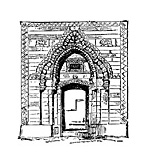
Clarifying Our Thinking about the Holy Land
SOME HISTORICAL CONTEXT
The brutal attack by the Palestinian Islamist group Hamas on southern Israel on October 7, 2023, during which around 1,200 Israelis were killed and more than 200 taken hostage, followed by the Israeli invasion of the Gaza Strip, a Palestinian territory, which has killed around 40,000 Palestinians, has re-established the longstanding Middle Eastern conflict in the center of the public mind. As I write this, the campus protests against the Israeli invasion have died down, but the bitter feelings on both sides remain strong. My purpose here is to set forth some of the historical context of this unfortunate situation, a context largely unknown to the American people and rarely mentioned in our public discourse, and to offer a few suggestions as to how the conflict might be resolved. So, regardless of whatever further events might — and probably will — occur between the time of my writing and when it appears in print, the historical context and its relevance remain the same.
What is that historical context? It goes back not merely to the origins of the State of Israel in 1948, but to the late 19th-century Zionist project, which promoted the idea of Jews resettling in the Palestinian region, that is, the area between the River Jordan and the Mediterranean Sea, which was then part of the Ottoman Empire. It is true that even after the expulsion of the Jews from the Roman Empire in the first century A.D. there had always been a Jewish presence in Palestine. But it was a small presence. It is probable that even by A.D. 70, when the Temple of Jerusalem was destroyed, the majority of Jews were already living outside Palestine, either as descendants of the much earlier Assyrian and Babylonian deportations or having emigrated afterward for commercial reasons. After the Islamic conquest of the Holy Land in the seventh century, Palestine’s population became overwhelmingly Muslim.
To look only at modern history and at fairly reliable figures, in 1922, after the League of Nations made Great Britain the mandatory power of the former Ottoman territory, the British authorities conducted a census. The results showed the following religious breakdown of the population of Palestine: just over 590,000 Muslims, almost 84,000 Jews, some 73,000 Christians, and several smaller groups. The next census conducted by the British, in 1931, counted just under 760,000 Muslims, just under 175,000 Jews, and just over 91,000 Christians. In other words, there was a significant Arab-Muslim majority. (Of course, the vast majority of the Christians were also Palestinian Arabs.)
It is understandable that this Arab majority might well have resented and opposed efforts to establish a Jewish state in their midst. In fact, violence did break out on both sides in Palestine during the 1930s and 1940s, including by Jewish groups against the British authorities. Various and conflicting plans were suggested to resolve the problem, and after the British turned the dilemma over to the United Nations, the General Assembly recommended a partition plan in November 1947 that would have created separate Arab and Jewish states. These states had intricate, curved boundaries, while Jerusalem itself was designated an International Zone.
You May Also Enjoy
When our God came to earth He did not reject the human pleasures He had created: He ate and drank, and worked His first miracle at a wedding feast.
Texts have a “signature,” or a kind of DNA, that allows us to determine whether a book was written by one or several authors. The Qur’an has traces of at least thirty.
We Westerners bear responsibility for the current sufferings in Iraq. We created a power vacuum there that has been filled by bloodthirsty maniacs hellbent on religious cleansing.

